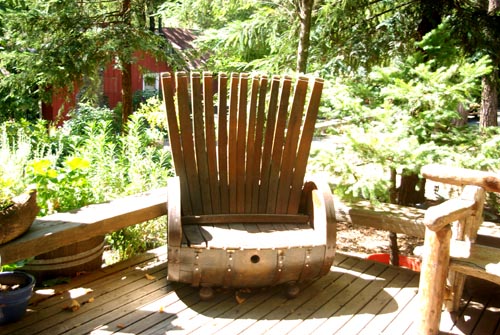
lovely wine barrel chair at Frey Winery
Take a seat, dear reader. We are off on a trip to Frey Vineyards, America’s first organic winery. I’d long told myself that a blogger living in wine country really ought to be posting now and again about vineyards and wineries. Right? So today is the day I’m inviting you to join me at a beautiful local winery. See? Vineyards.

vineyards at Frey Winery
However, as much as I appreciate the beauty of the many vineyards among which I live, true to my independent spirit it was actually the straw bale gardens that motivated this trip! Yes, indeed. And here is our travel guide, Marie, resident landscape gardener at Frey Vineyards, and a bright and shining and generous spirit. Lucky us.
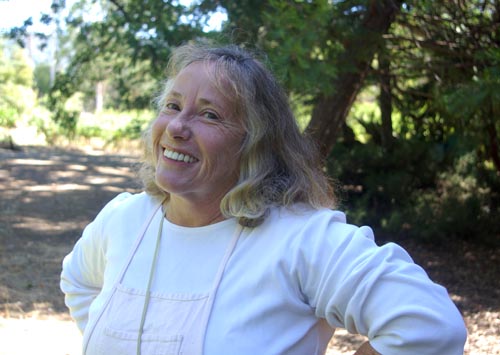
Marie, resident landscape gardener at Frey Vineyards
Adding to the fun is Puppy the poodle, one of the many dogs who live at Frey Vineyards, and who happily joins us in the adventure.
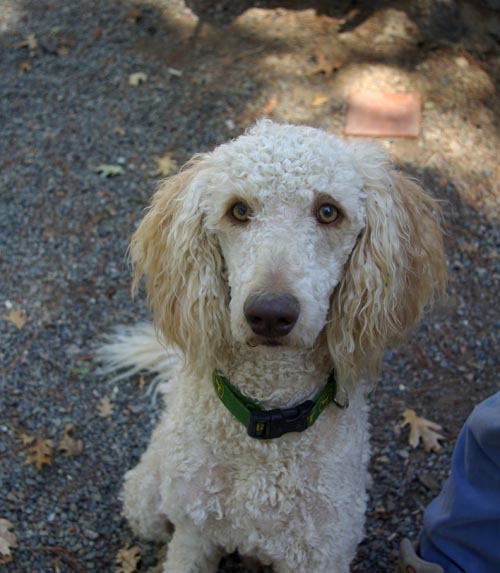
So here’s the skinny. It so happened that we attended a very large picnic which took place at Frey Vineyards over Labor Day, and I was totally enchanted with a number of things, particularly the straw bale gardens created by Marie. So I called and Katrina Frey kindly invited me to come out and gather information about this incredible way of gardening, which I fully intend to implement instead of the traditional raised beds I had been anticipating this winter. Hallelujah! So easy! You start here.
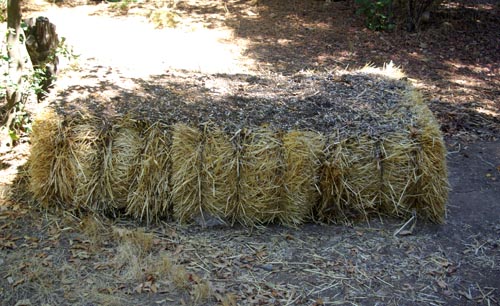
simple straw bale
Are you already getting the idea? I knew you would! Marie suggests that you put two bales side by side and pile two on top of each. Of course this is ideal from so many standpoints! One doesn’t have to stoop as much, so much easier on the back and knees. One need not really dig. The bunnies are less inclined to munch. The dogs won’t you know what in it. The list goes on. I think it’s fantastic! So here’s what you do. You punch a hole in it. And you stick some dirt in the hole. And then you put your seed or starter plant in the hole. Water. Done! Here’s Marie showing me how to make a hole with her gardening tool.
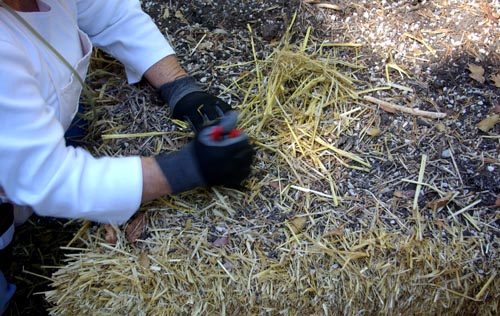
And here’s what you get!
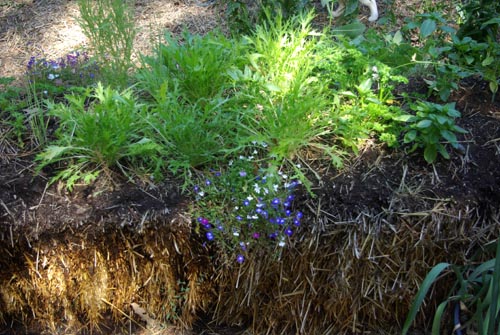
lettuces, basil and lobelia happily growing in straw bale
Is that not incredible?? And here’s a broader view of the beds, so you really get this technique.
Now as if I needed even a teensy bit more convincing, this was the best part for me: the natural composting that occurs, as straw, miraculously, turns into this!
Is this not the richest soil you’ve seen outside of your compost bins? With none of the work! Stunning!
“People think they need to feed their plants. What they don’t realize is that they need to feed their soil and their soil will nurture their plants.” ~Marie, resident landscape gardener at Frey Vineyards
So, after a couple of years these straw bales break down into that delicious treasure in Marie’s hand, and you can use that as a basis for your expanding beds, or start over. What was truly amazing to me was when Marie told me that a local Waldorf school teacher built a vegetable garden on asphalt with her second graders using straw bales! Can you think of the possibilities? Or you could put them on a sturdy roof! Or you could suggest a straw bale garden at a local nursing home. Perhaps you have an aging family member who loved gardening and this would be the door. Or maybe someone (you?) were longing for a garden but you only have a driveway? I mean, really. This could fly.
Not quite ready to leave Frey Vineyards in spite of learning what I’d come to learn, I asked if we might go see their beehives, as I knew they had an unusual hive from Germany that some beekeepers were ooing and awwing over on Labor Day, and about which I’d read. Marie was graciously happy to oblige. Here’s what that looked like. I was careful to not stand anywhere near the front, blocking bees from their intentional comings and goings.
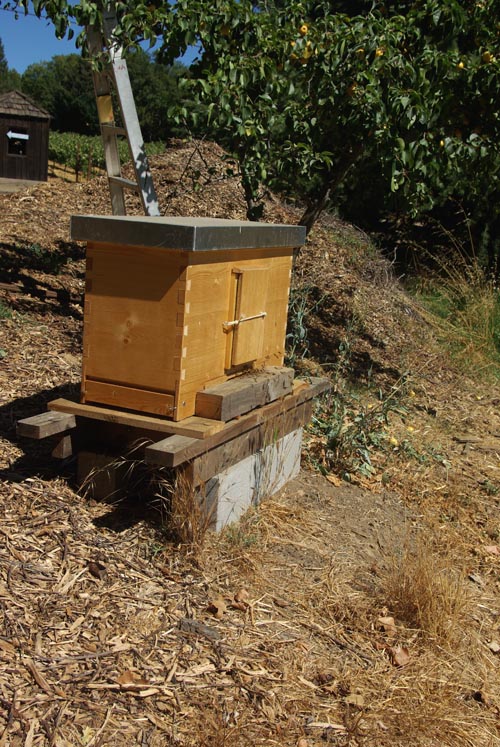
And here are some of the other more traditional hives, a short distance away.
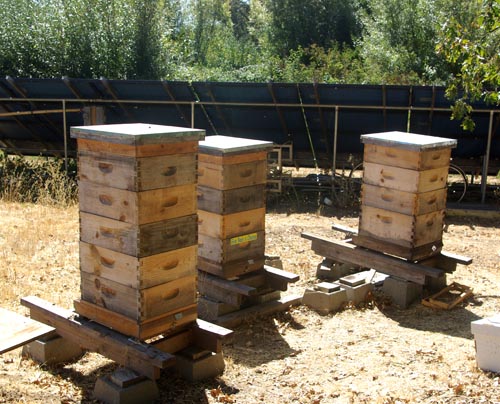
Marie kindly explained to me that they are raised up to the exact height that would put, oh, say, a raccoon’s face right in line with the front door (and flight path) of the bees. This would not be good for the raccoon, but handy for the bees. She says the dogs (and there are many on the property) never go near the hives. Good to know.
Ironically, as I was bidding farewell, Marie brought to my attention that, given that it’s harvest season, the winery workers are bottling today. Perhaps another day? Instead I turn my attention to the beauty of a very large perennial lobelia displaying her flowers in her final days. Today I’ll go with her.
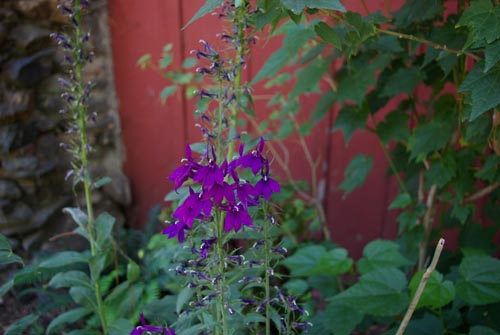
I am grateful for a lovely day.
Love and gardening blessings,
Kathryn xoxo
Posted on September 15th, 2009 by Kathryn
Filed under: Field Trips
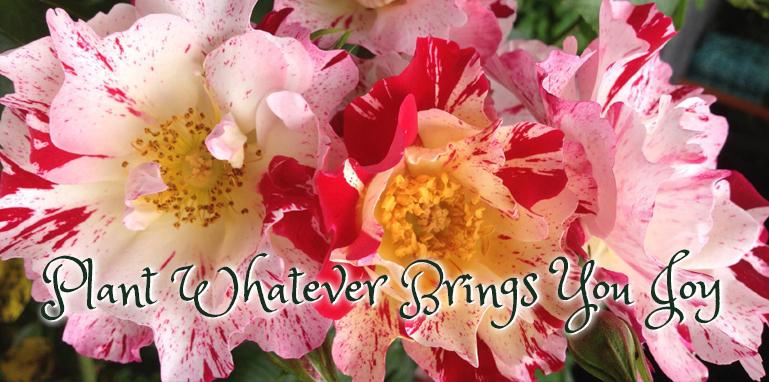

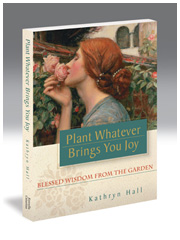





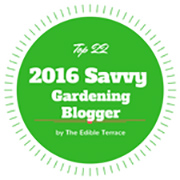

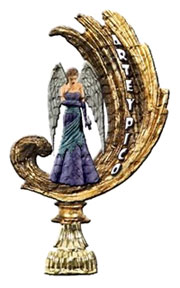
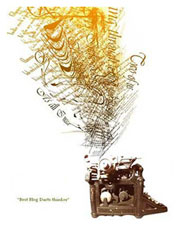
Lovely post and pics! I do Love the straw gardens! What a fantastic idea, and suggestion!
Love you,
Antonia
xoxox
Hi, Antonia! I’m so glad you were with me on that first visit so you got to at least get a glimpse of these amazingly simple but pragmatic and beautiful beds! Love you, Baby Girl. Mom xoxo
Cool concept, thanks for sharing this Kathryn. Beautiful photos too!
🙂
Kathlene
Thank you for such a lovely, succinct, and picturesque blog on the STRAW BALE gardens at the Frey Winery!
I only wish to add that the basic design of 2 wide X 2 high can be configured to any length or shape. That is just the basic configuration I’ve found to require the easiest handling/harvesting. Several of the beds you featured in the above photos are 3 or 4 bales long. Beds can be designed to accommodate any situation and requirement—2 high X 2 wide X any length. Straw bale gardens lend themselves to urban gardening, gardening for the elderly or disabled, erosion control, and an alternative to the high cost and resource consumption of traditional raised beds. Imagine the carbon footprint reductions (all that straw no longer being burned!) Imagine the weekend gardeners no longer facing cultivation and weeding!
Did you mention all the plants grown in the straw bale gardens at the Frey Vineyards are edible and/or bee and butterfly habitat?
My pleasure meeting you. I look forward to our next visit and garden adventure.
Marie Abranya,
Habitat and Ornamental Gardener,
Frey Winary, Redwood Valley, CA
I believe that the highlighted quote from Marie is the essence of gardening. Person understanding that soil is the center, will be able to grow organically anything. This ability comes from understaning of life cycle in Nature.
Straw bale gardening – great idea – thanks for sharing.
Ewa
Good morning, Kathlene! Thanks for your kind comments and the visit! Love, Kathryn xoxo
Welcome, Marie! Thank you so much for elaborating on the construct possibilities of the straw bale gardens. So appreciated! And thank you again for the kind tour and teaching. I will be happily implementing this for my winter veges! Big hug! Kathryn xoxo
Dearest Ewa, I so appreciate your adding this comment, and sharing your deep understanding of the basic importance that “soil is the center.” I’m looking forward to reconstituting my backyard soil with the simple practice of starting from a lovely bale of straw! Hugs across the pond! Kathryn xoxo
Kathryn:
I love it! For years, folks have been complaining about the use of straw bales for sediment & erosion control. Unsightly and weeds grow from them, but if you deliberately planted them… Years ago, when I was cropping my whole back yard, I found that I could not grow potatoes and onions to any size in my Ohio glacial clay so I got straw bales from my sister Jill who lives in the country and spread straw about 1 ft. thick over part of the garden. I put my seed potatoes and onion sets on top of the ground and under the straw and watered carefully. Grew great potatoes and onions and the straw built up the soil. This idea is even better. Like growing horseradish in holes in a barrel and then harvesting by dumping out the barrel. Any root vegetable that is challenged by complacted soil should do wonderfully. You can just tear down the straw bale to harvest!
Cheers, Julie
Hi, Julie! Last night I got a call from Marie making sure I understood that one needs to use straw bales, not hay bales for this process, as apparently hay is full of seeds that will sprout. Ditto a bunch of other grains, like alfalfa. I have a lot to learn in this dept. still. But straw is apparently the grain of choice, and also creates a recycling use for leftover straw that would otherwise be burned off by farmers (waste and pollution). I love the image of growing horseradish in a barrel and dumping over to harvest. 🙂 With the straw, though, it really does decompose into wonderful soil if you just leave it to its process. So no need to tear it down. It will tear itself down into the most beautiful of rich soils. What a bargain! Love, Kathryn xoxo
Oh, now you’ve done it. I’m trying this come spring. This is even easier than my current favorite method, which is “lasagna gardening.” Now I just need to get a hold of a few dozen straw bales 🙂
Thanks for the tour!
LOL, Colleen! 🙂 Now I have to come peek and see what your lasagna gardening is all about. Wouldn’t it be hilarious if all the gardening bloggers we both know all converted to Straw Bale Gardening? That could be pretty darn funny! 🙂 Btw, Marie did say “Try to get organic straw.” Apparently you might have to dig around, so to speak, but it’s possible. You probably have good connections, being an organic girl yourself. 🙂 Kathryn xoxo
I have always wanted to try the straw bales when planting some perennials. I wish I had the room to give it a shot. I enjoyed the tour very much!
Hi, Jeff, and welcome! Apparently you can do this on a driveway! Can you squeeze it in? Roof?? Good luck! Thanks for the visit. Kathryn xoo
Hi Kathryn!
I have to admit my heart starting beating faster when I saw the plants growing right in the bale itself. Then my eyes opened wide and my jaw dropped when i saw that soil!
I so agree that good soil is everything, and I am very excited about trying this. We have a small area for growing vegetables, and i can see us tending the bales issuing plants from a garden chair, or sitting on the bale, not straining our back and knees on the ground. i just love this idea. I had thought about raised containers with a lip to sit on, but this has much more going for it: the lesser cost, the impermanence which is a good thing if we want to do something different in the future, and the planter works with nature!
It will be fun to purchase the bale as a day trip to the country where they sell straw bales.
What a wonderful post, Kathryn. Thank you for showing us new ways to grow things. The thoughts of my next seasons vegetable garden is invigorated!
🙂
Philip
Good Morning Kathryn,
what an interesting post. I just have to try this straw bale technic, there is just one thing I’m a bit puzzled about and that is if the slug will love it too. You must have had a lovely day at Freys it looks great.
LOLove Tyra
Good morning, Philip! I am getting such a kick out of thinking of so many of our gardening blogger friends trying this out! I really do think we need to do a Straw Bale Garden post late next spring using a collection of photos from all the various gardens. What fun! Glad I could pass along this idea! Yes, it’s so much less work and I just LOVE that it decomposes into treasured earth! So fun! Kathryn xoxo
Hi, Tyra! I’m not sure about slugs. I have almost no slugs, but lots of snails. I guess I will find out if they are attracted to the straw bales. They would be easy enough to pluck out, though, right? No bending! Kathryn xoxo
Hi Kathryn – what a GREAT idea! All those plants at a sensible height for working on AND that fantastic soil at the end of it too. A double whammy! 🙂 Looks like you had a wonderful time at the Vineyard.
Seeing those vines reminded me of when I helped take a school activity trip to France. The instructors told the kids that the vines were especially planted in rows to allow for Llama racing! They told them that the sandy ground was the training runs and the Llamas built up to run on the stoney ground. The Llamas had rings through their noses, the jockeys had long pointed sticks and when they got to the end of a row, the jockeys shoved the poles down through the nose rings and swivelled the Llamas round and down the next row. The kids TOTALLY believed them! …….. and the reason we never saw any Llamas? Llama racing is illegal in France and they only race at night!!!
Hi, Liz, That’s a bizarre story! I’ve never heard of llama racing before. I will have to poke into that one. 🙂
Yes, the straw bale gardening process is going to spare a lot of knees! We are really looking forward to trying soon! Winter veges will be simple this year! Thanks, as ever, for the visit! Kathryn xoxo
O holy cow! Now you’ve gone and done it! We up here in the mountains are just starting to think about putting our beds to bed before winter! And now all I can think about are all the possibilities next Spring for straw bales! Thanks for such a wonderful post. BTW, do you have any idea how they might hold up under snow?
Hi, Radiance! 🙂 We are all dying to try it. We will all have to compare notes in the spring! I’m going to start this winter but I don’t get near the snow you will. No clues yet on how things will hold up county to county (and country to country for that matter!). Let’s reconvene in April. 🙂 Hugs! Kathryn xoxo
I really like this idea. To be honest, i’m not even sure if we do that much straw here (Florida isn’t exactly the bread basket of America), but now I have the motivation to find out and share this with people here.
Hi, Grasshopper! Welcome. I would agree that Florida does not exactly conjure up straw fields. I’ll be interested to know what you find out. I’m sure you can buy straw somewhere, though, right? Feed stores. You have horses, right? Good luck! Kathryn xoxo
I have long used straw bales in my garden near Shasta Lake where the soil is red clay. What a wonderful experience when in nine years I turned a muddy red clay into wonderful soil. I buy the straw at a feed store which is a common outlet in areas where people raise animals or have pets. I also must comment on the “traditional” bee hives which brought back a flood of memories – when I lived in Cottonwood in Shasta County, California, my best friend and I used to play in the boxes (hives) which were stacked in the yard of the bee shippers who had headquarters there. At the time they were one of the biggest shippers in the United States. We played hide and seek for hours upon end in those empty boxes. That was about 60 years ago.
Hi, Patricia B! And a warm welcome! I’m so glad to hear you have years of experience using straw bales with success. I’m so looking forward to doing this! Fascinating story (and image) of your playing among the bee hives in Shasta County! What a treasured and unique memory! Thanks for the visit! Glad you found my blog. 🙂 Kathryn xoox
I’ve never heard about straw bale gardening! I absolutely love it! Thank you so much for educating me! I think my boys would love it, too! I will dream about that black soil!
Welcome, Tatyana! Yes, I am dreaming about that black soil as well. Here’s to rejuventated, rich earth! A miracle in our midst. Enjoy! Thanks for the visit. Kathryn xoxo
I’m not sure what kind of farmers burn off straw but having grown up on a farm, I’ve never heard of that. Straw is used as bedding for animals and cleaned out of the barn regularly to the manure pile. It is then spread on the fields with a manure wagon as fertilizer.
Hi, Jane, Welcome and thank you for sharing your experience of how straw is used in your environment. I did not know that. Kathryn xoxo
Note to Jane: that’s how it used to be done, but very few farmers do that, anymore… that is, bed down a few animals on straw, scrape up the manure-laden straw, and spread it on their fields. Only very small scale and organic farmers do this. Much straw is burned on fields unless there is an economic reason to windrow and bale it. Conventional chemical fertilizers have the effect of increasing straw length, making for more straw than many farmers want or need to leave as ‘trash’ on fields to catch snow for next year’s moisture (in colder areas) or reduce wind and water erosion. Although some companies have started up to convert agricultural straw into products like fibreboard for building construction, which would ultimately reduce use of wood, various problems have led to bankruptcy for some. So they burn it. Partly because of this desire to eliminate excess straw, many of the newer wheats and other grains have been bred to have shorter stems. In spite of all of this, cereal straw is still being baled and sold for the livestock and pet industries, and if you are near farming country, it’s very cheap, because farmers are basically selling it to get rid of it. Depending on where you live, the best idea is to find a farmer who will not only sell, but deliver, your bales to you every fall (or spring). It might be the start of a beautiful friendship.
Thank you so much, Barbara, for this input. I would never have known.
Kathryn xoxo